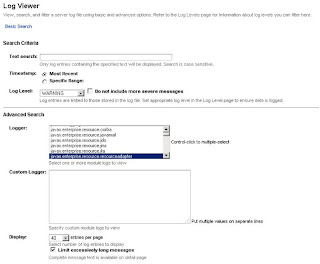I faced a problem while deploying a web application in
Glassfish 3.1 cluster. The problem was that HTTPsessions were getting lost
haphazardly. I was trying all possible sorts of configurations but the problem
was not getting away. While testing the application, I observed that mostly at
the time of loading the menu/events of the application the session was getting
lost. After giving some load on Google servers, I found the cause of the
problem. As per the Glassfish High Availability Administration Guide, if we use
Memory Replication in our Web Application and if multiple client threads
concurrently access the same session ID, then we may experience session loss
without any instance failure. Glassfish 3.1 memory replication framework makes
use of session versioning. As our application was using multiple threads
concurrently to access the same session ID (mainly at the time of loading
menu/events of the page, or on some ajax calls), so the session was getting
lost. The solution for this problem was to add <property name="relaxCacheVersionSemantics"
value="true"/> in the glassfish-web.xml file.
<session-config>
<session-manager
persistence-type="replicated">
<manager-properties>
<property
name="relaxCacheVersionSemantics" value="true"/>
<property
name="persistenceFrequency" value="web-method"/>
</manager-properties>
</session-config>
This enables the web container to return for each requesting
thread whatever version of the session that is in the active cache regardless
of the version number. And voila, I got it right and it worked.











